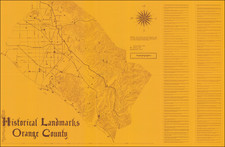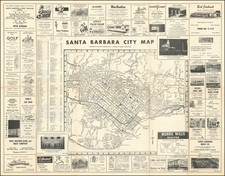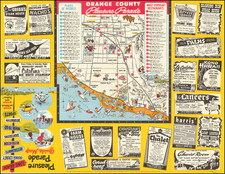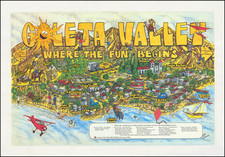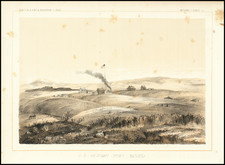Attractive lithograph of the Ranch of D. & T. Williams of William Brothers, from Moore & De Pue's Illustrated History of San Mateo County.
Set among the rolling hills of the Santa Clara Valley, the ranch is a sizable piece of land characterized by its agricultural vitality and rustic charm.
The view includes a main ranch house, windmills, water towers, and several outer buildings, with horses, cows and pigs. The land around the house is an expanse of fields and pastures, marking the ranch's agricultural roots. The fields hint at the different crops cultivated on the ranch.
The ranch's boundaries are defined by fences, signifying the extent of the property without detracting from its welcoming nature. Over the years, the ranch evolved and grew, and by 1950, the Williams Ranch was a significant contributor to the agricultural output of the area.
Robinson Ranch
Robinson Jones Weeks, his brother Thomas, and Robinson's family were among the early Gold Rush pioneers, eventually settling in San Francisco after a journey around Cape Horn and across the Isthmus of Nicaragua.
Robinson and his family relocated from San Francisco to Santa Cruz, where their son Burt was born in 1853. By 1855, the Weeks family had settled on the land that would become Williams Ranch. Robinson purchased between 2,000 and 3,000 acres and established his permanent residence on the property. He was instrumental in the local community, acting as a county supervisor and school trustee, and building the road from the La Honda Junction to San Gregorio House in 1872. The location of his property was fortunate, being along the stagecoach route and allowing travelers a stop on their journey.
In 1866, Robinson's daughter Emily and her husband John Knott purchased 300 acres from Robinson, which included the land that would become Williams Ranch. The Redwood City Times Gazette in the 1870s reports Emily's impressive livestock and grain holdings. Notably, she also had a business relationship with Leland Stanford involving racehorses.
Emily's husband John was killed in 1885, leaving her a widow with three young daughters and the sole responsibility of running her ranch business. Emily deeded 150 acres to her sister in 1904 for the price of $10.
Ruby M. Knott, Emily's daughter, married Captain Charles Henry Williams, a Swedish immigrant in 1895, and they had a son Collis in 1896. While Collis and other men were away at war, Ruby and her mother Emily finished building the ranch's large stock barn. Ruby and John Greer, a family friend, joined partnership as Laurel Vale Farms in the early 1920s. The farm, near what is now downtown Palo Alto, was comprised of fields of hay, corn, and alfalfa, and numerous buildings housing stock and dairy equipment. During the Depression, the Palo Alto property was sold, and the family moved to San Jose.









